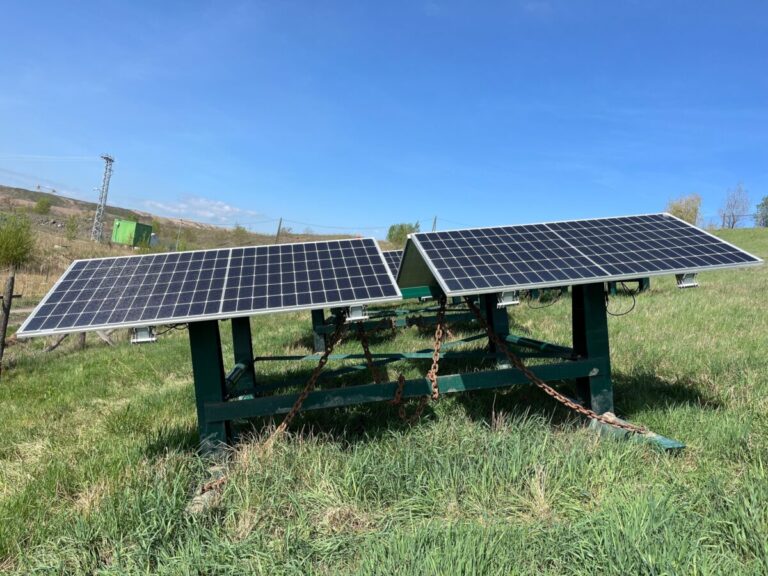CEZ Group has developed a new solution for securing solar photovoltaics in areas with unstable ground from the central part of conveyor belts previously used in coal mines. Several steel structure pilots have already been deployed to a reclaimed area near the Bílina mine in the north of the Czech Republic.
Czech utility company CEZ group has developed a new solution for securing solar panels in areas with unstable surfaces, such as rock piles, waste ponds and other unstable areas.
This uses the central part of the conveyor belts used in strip coal mines. Engineers from Prodeco, a CEZ Group company, have developed prototypes using old mining equipment, in particular the steel structure that forms the central part of the tires.
“We have used the central parts of conveyor belts, which offer great advantages: they are robust, as they are designed for heavy use, and they are equipped with side rails that are now used for surface transport,” the company said.
Luboš Straka, CEO and Chairman of the Board of Directors of Proedco, said that the central parts of conveyors offer great advantages because they are robust, designed for heavy use and equipped with side rails that are now used for cross-country transport. “This makes these structures suitable for any unstable surface or surface subject to an environmental burden, because they stand alone on the surface, are extremely stable and they provide a non-invasive method for building photovoltaic power plants,” Straka added .
If solar panels of standard construction were mounted on troubled land, they would seize and crack, CEZ says. By using old steel constructions of conveyor belts, the entire structure tilts as soon as the extracted material settles and the tension therefore has no influence on the solar panels.
CEZ says thousands of these modules will be available at the Bílina mine, located in the north Czech Republiconce coal mining has been phased out. Several pilot structures have already been deployed on a reclaimed area near the Bílina mine extraction area, with experts testing the results.
“The positive news is that the performance of the solar panels has not decreased,” says Jan Kalina, head of the Renewable and Conventional Energy department of the CEZ Group. “However, for unstable substrates it will be more suitable to use other technologies than conventional silicon panels, such as thin-layer panels without silicon cells, where the semiconductor is applied directly to the glass. The selection of the ideal technology is now the subject of further development.”
CEZ has set itself the goal of building renewable sources with a capacity of up to 6 GW by 2030.
This content is copyrighted and may not be reused. If you would like to collaborate with us and reuse some of our content, please contact: editors@pv-magazine.com.


